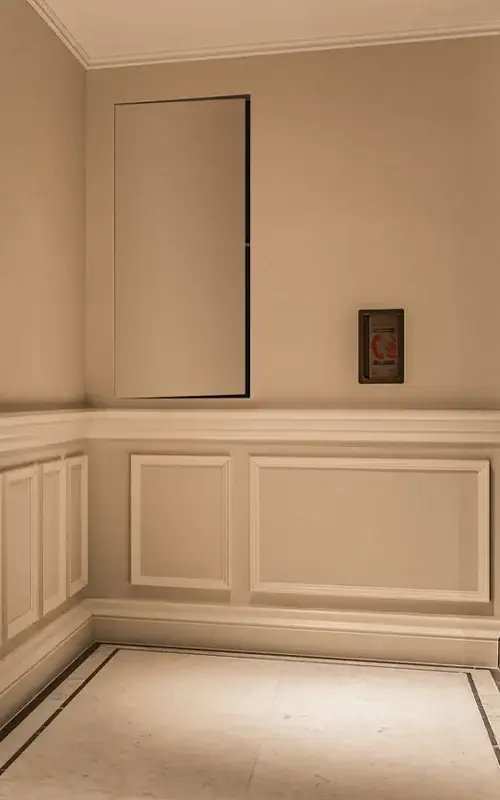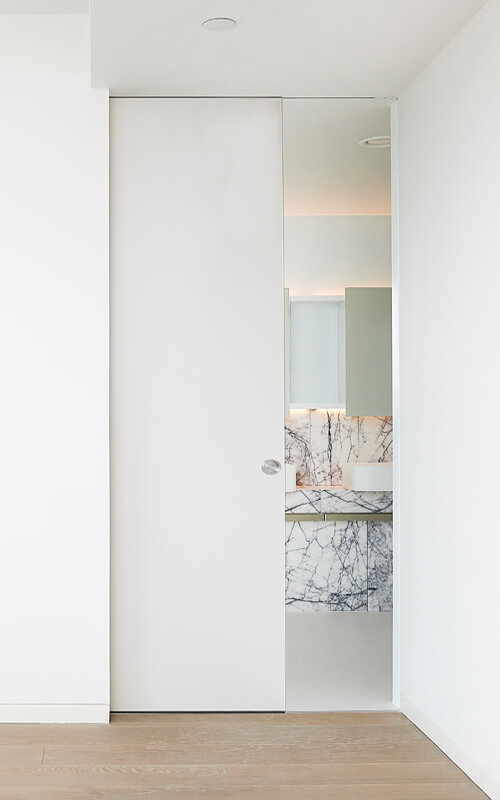
We recently sent out a survey to our customers to find out what are the biggest challenges for architects in 2025 and how to solve them.
Read below the top challenges for architects when specifying doors and how to simplify the specification process for your next project.
Biggest pain points when working with a door manufacturer
Certification and compliance were the most common themes when architects were asked for their biggest pain point when working with a door manufacturer. Fire compliance has come under greater scrutiny over the last 12 months, with more legislation coming out post Grenfell, including the announcement of the removal of BS476-22 and the Construction Products Green Paper that will become legislation imminently.
Door manufacturers can make the lives of architects easier by making certification and test evidence readily available, so architects can understand exactly what the door was tested in and what is a compliant solution. It is also vital the door manufacturers don’t unintentionally become the designer and instead support the designer by providing the right certification.
Another common headache for designers in 2025 is making sure details and drawings are correct. At Selo, we exist to simplify bespoke and complex building methods, which is why all of our downloads are available in the resources section of the website. Drawings must be correct to ensure the building can be design accurately and compliance can be met. Products being easy to specify are vital for architects looking to design a building and consider the safety of the doors and walls as a system.
Delivery dates are also a common frustration for architects, so manufacturers and suppliers must be up front with their lead times.
Architects also really value being able to speak to technical teams when needed. Achieving a compliant solution is a critical part of the design process and speaking to technical teams will help architects achieve compliance, whilst also creating a beautiful contemporary interior.
Why do you work with a door manufacturer?
So, what do architects look for when choosing a door manufacturer in 2025? Communication and customer service was the most common theme, which is why Selo developed our Halo Assist programme, to support projects from concept through to execution and after sales support.
Products quality is fundamentally what designers are looking for. Do your products meet the required specification, quality and do they solve a problem on-site?
Compliance is perhaps the biggest risk for everyone involved in a project, including architects and manufacturers. By providing the correct test evidence and accurate customer literature, you can help architects achieve a compliant door solution.
Architects also value products that are easy to specify. To make specification easy, manufactures should make customer literature easy to access and provide test reports without endless NDAs and commitments.
Architects also really value when manufacturers and suppliers are upfront with what their products have not ben tested with. The Construction Products Green Paper, which is likely to turn into a new legislation, states that all construction products should come with a risk assessment. This will help all parties establish safer solutions, for both fire rated and non-fire rated products.
Removal of BS 467-22
All national standards with regard to fire protection performance have been removed from building regulations, so all of the parts of BS476 for resistance to fire in Approved Document B have been removed. Only the EN standards can be used to define performance from the end of the 5-year coexistence period which is 2 September 2029.
Fire doors will not need to be tested to the EN standard until 2 September 2029 but by having a fire door tested to the EN standard, you can provide a safer fire door at your project.
In our customer survey, we asked architects how worried they are about the removal of BS 476-22.
- 16% Worried
- 31% Don’t know what it is
- 53% Neural
It is important for suppliers to work with architects through CPDs, installer training and specification support to advise on new change within the industry. Compliance is now the number 1 factor for architects when specifying a door, so it’s critical that door manufacturers help architects achieve a compliant solution.
Most important factors when specifying a door
When Selo first began, we wanted to create beautiful contemporary interiors and concealed frame doorsets. And, whilst this is still a key factor in what we do, we also exist to simplify bespoke and complex building methods through simplifying the specification of compliant doorsets. Our research shows that architects are now more focused on compliance than aesthetics, so suppliers need to provide the required information for architects to design a compliant solution.
- 84.6% compliance
- 15.4% Aesthetics
Price or lead times
Projects bring pressure, to deliver on time, quality and cost. From our research, architects are still more focused on price than lead times, however the gap has closed over recent years.
To help architects, suppliers should always provide solutions should look for cost effective solutions, without compromising on performance, quality, customer service or lead times.
In addition, the rising cost of materials means that products are more expensive to make than previously. Suppliers and manufacturers should source cost-effective materials, without compromising on cost and performance. A good example is with pocket doors that traditionally have a bad reputation through lack of durability and reliability. Whereas, our Enigma Pocket Doors have been designed to withstand 10,000 open-close cycles and avoid common problems, such as the pocket door rumbling.
- 38.5% lead times
- 61.5% price
Sustainability
The construction industry generates as much as 40 percent of the world’s carbon emissions, making it the top global consumer of raw materials. Consequently, the architects of 2025 have a special responsibility to design buildings which are socially, economically and ecologically sustainable.
The current volume of natural resources being consumed in the construction of buildings is highly unsustainable and will lead to significant environmental damage if left unchecked. One of the biggest challenges to architects who are conscious of the importance of sustainable design is that sustainable options are often neglected and considered of secondary importance early on in the design process. When energy analysis is undertaken, it is generally further down the line, any amendments often prove problematic to incorporate into the original design.
While the ecological damage caused by the construction of buildings presents a huge challenge to the architects of today, there is also opportunity to be found, and those architects who do take up the challenge will find themselves in great demand in the growing green sector.
Conclusion
Architect’s biggest challenges have significantly changed since 2017, when Selo first conducted our research. And whilst education and sustainability remain important, compliance is the most common challenge for architects from our 2025 research.
If you need specification support for your next project, please contact us today.




























